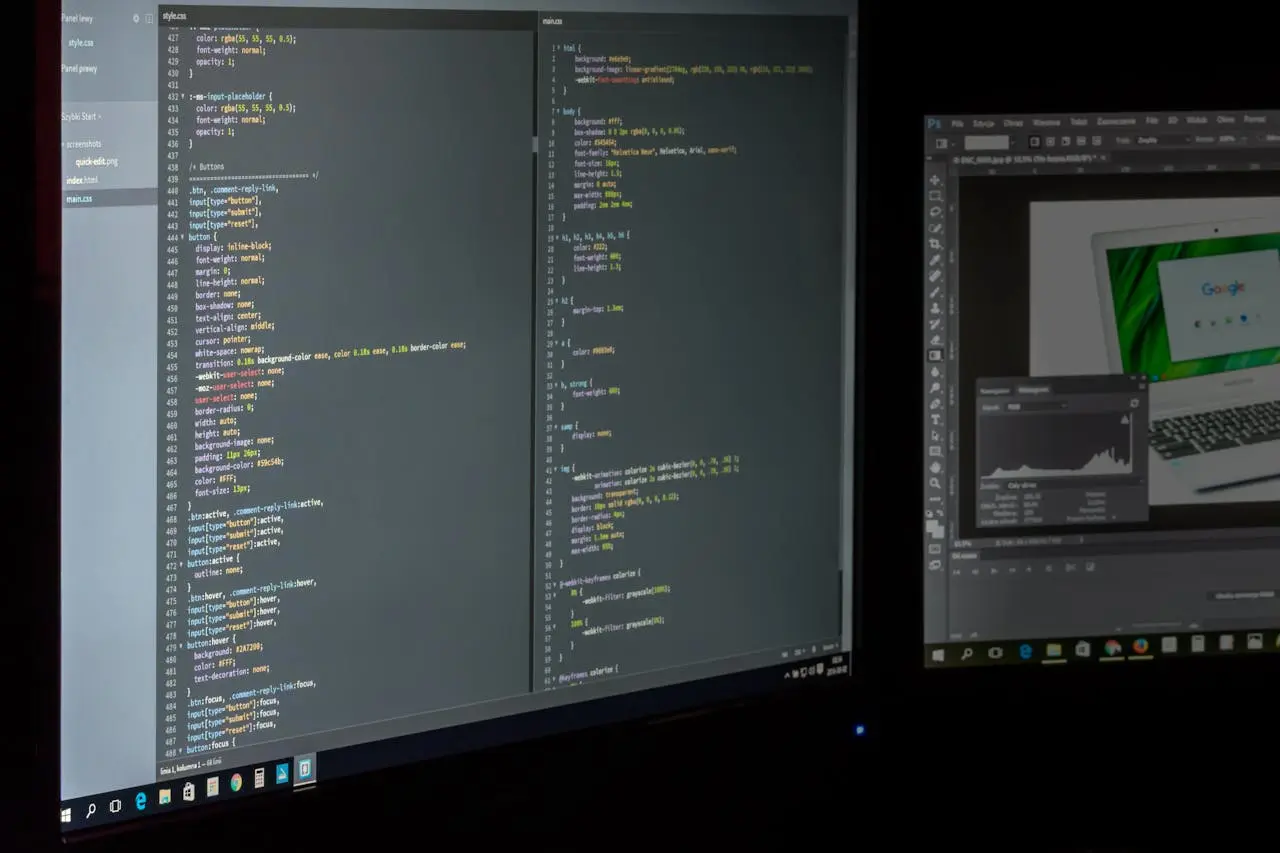Identifiers and Keywords
Identifiers are the names given to various program elements such as constants,
variables, function names and arrays etc. Every element in the program has its own
distinct name but one cannot select any name unless it conforms to valid name in C
language. Let us study first the rules to define names or identifiers.
Rules for Forming Identifiers
Identifiers are defined according to the following rules:
- It consists of letters and digits.
- First character must be an alphabet or underscore.
- Both upper and lower cases are allowed. Same text of different case is not
equivalent, for example: TEXT is not same as text.
- Except the special character underscore ( _ ), no other special symbols can be
used.
For example, some valid identifiers are shown below:
X
X123
_XI
temp
tax_rate
For example, some invalid identifiers are shown below:
123 First character to be alphabet.
“X.” Not allowed.
order-no Hyphen allowed
error flag Blankspace allowed
Keywords
Keywords are reserved words which have standard, predefined meaning in C. They
cannot be used as program-defined identifiers.
The lists of C keywords are as follows:
char, while, do, typedef, auto, int, if, else, switch, case, printf, double, struct, break, static, long, enum, register, extern, return, union, const, float, short, unsigned, continue, for, signed, void, default, goto, sizeof, volatile .
Note: Generally all keywords are in lower case although uppercase of same names
can be used as identifiers
Character Set
When you write a program, you express C source files as text lines containing
characters from the character set. When a program executes in the target environment, it uses characters from the character set. These character sets are related, but need not
have the same encoding or all the same members.
Every character set contains a distinct code value for each character in the basic C
character set. A character set can also contain additional characters with other code
values. The C language character set has alphabets, numbers, and special characters as
shown below:
- Alphabets including both lowercase and uppercase alphabets - A-Z and a-z
- Numbers 0-9
- Special characters include:
; : { , ‘ “ |
} > < / \ ~ _
[ ] ! $ ? * +
= ( ) - % # ^
@ & .
Identifiers and Keywords
Identifiers are the names given to various program elements such as constants,
variables, function names and arrays etc. Every element in the program has its own
distinct name but one cannot select any name unless it conforms to valid name in C
language. Let us study first the rules to define names or identifiers.
Rules for Forming Identifiers
Identifiers are defined according to the following rules:
- It consists of letters and digits.
- First character must be an alphabet or underscore.
- Both upper and lower cases are allowed. Same text of different case is not
equivalent, for example: TEXT is not same as text.
- Except the special character underscore ( _ ), no other special symbols can be
used.
For example, some valid identifiers are shown below:
X
X123
_XI
temp
tax_rate
For example, some invalid identifiers are shown below:
123 First character to be alphabet.
“X.” Not allowed.
order-no Hyphen allowed
error flag Blankspace allowed
Keywords
Keywords are reserved words which have standard, predefined meaning in C. They
cannot be used as program-defined identifiers.
The lists of C keywords are as follows:
char, while, do, typedef, auto, int, if, else, switch, case, printf, double, struct, break, static, long, enum, register, extern, return, union, const, float, short, unsigned, continue, for, signed, void, default, goto, sizeof, volatile .
Note: Generally all keywords are in lower case although uppercase of same names
can be used as identifiers
Data types and Storage
To store data inside the computer we need to first identify the type of data elements
we need in our program. There are several different types of data, which may be
represented differently within the computer memory. The data type specifies two
things:
- Permissible range of values that it can store
- Memory requirement to store a data type
C Language provides four basic data types viz. int, char, float and double. Using
these, we can store data in simple ways as single elements or we can group them
together and use different ways (to be discussed later) to store them as per
requirement.
| Data Type | Description | Size | Range |
|---|
| int | Integer | 2 Bytes | -32,768 to 32,767 |
| char | Character | 1 Byte | -128 to 127 |
| float | Floating Point Number | 4 Bytes | 3.4e-38 to 3.4e+38 |
| double | Higher Precision Float | 8 Bytes | 1.7e-308 to 1.7e+308 |
Memory requirements or size of data associated with a data type indicates the range of
numbers that can be stored in the data item of that type.
Data Type Qualifier
Short, long, signed, unsigned are called the data type qualifiers and can be used with
any data type. A short int requires less space than int and long int may require more
space than int. If int and short int takes 2 bytes, then long int takes 4 bytes.
Unsigned bits use all bits for magnitude; therefore, this type of number can be larger.
For example signed int ranges from –32768 to +32767 and unsigned int ranges from
0 to 65,535. Similarly, char data type of data is used to store a character. It requires 1
byte. Signed char values range from –128 to 127 and unsigned char value range from
0 to 255. These can be summarized as follows:
| Data Type | Size (bytes) | Range |
|---|
| Short int | 2 | -32,768 to 32,767 |
| int | 2 | -32,768 to 32,767 |
| Signed int | 2 | -32,768 to 32,767 |
| Unsigned int | 2 | 0 to 65,535 |
| Long int | 4 | -2,147,483,648 to 2,147,483,647 |
| Signed char | 1 | -128 to 127 |
| Unsigned char | 1 | 0 to 255 |
Variables
Variable is an identifier whose value changes from time to time during execution. It is
a named data storage location in your computer’s memory. By using a variable’s
name in your program, you are, in effect, referring to the data stored there. A variable
represents a single data item i.e. a numeric quantity or a character constant or a string
constant. Note that a value must be assigned to the variables at some point of time in
the program which is termed as assignment statement. The variable can then be
accessed later in the program. If the variable is accessed before it is assigned a value,
it may give garbage value. The data type of a variable doesn’t change whereas the
value assigned to can change. All variables have three essential attributes:
- the name
- the value
- the memory, where the value is stored.
For example, in the following C program a, b, c, d are the variables but variable e is
not declared and is used before declaration. After compiling the source code and look
what gives?
main() {
int a, b, c;
char d;
a = 3;
b = 5;
c = a + b;
d = 'a';
e = d;
..........................
..........................
}
After compiling the code, this will generate the message that variable e not defined.
Declaring Variables
Before any data can be stored in the memory, we must assign a name to these
locations of memory. For this we make declarations. Declaration associates a group of
identifiers with a specific data type. All of them need to be declared before they
appear in program statements, else accessing the variables results in junk values or a
diagnostic error. The syntax for declaring variables is as follows:
data- type variable-name(s);
For example,
int a;
short int a, b;
Initialising Variables
When variables are declared initial, values can be assigned to them in two ways:
- Within a Type declaration
The value is assigned at the declaration time.
For example,
int a = 10;
float b = 0.4 e –5;
char c = ‘a’; - Using Assignment statement
The values are assigned just after the declarations are made.
For example,
a = 10;
b = 0.4 e –5;
c = ‘a’;
Constants
A constant is an identifier whose value can not be changed throughout the execution
of a program whereas the variable value keeps on changing. In C there are four basic
types of constants. They are:
- Integer constants
- Floating point constants
- Character constants
- String constants
Integer and Floating Point constants are numeric constants and represent numbers.
Rules to form Integer and Floating Point Constants
- No comma or blankspace is allowed in a constant.
- It can be preceded by – (minus) sign if desired.
- The value should lie within a minimum and maximum permissible range decided
by the word size of the computer.
Integer Constants
Further, these constant can be classified according to the base of the numbers as:
- Decimal integer constants
These consist of digits 0 through 9 and first digit should not be 0
For example,
1,443,32767
are valid decimal integer constants - Invalid Decimal integer Constants
12 ,45 not allowed
36.0 Illegal char - Octal integer constants
These consist of digits 0 through 7. The first digit must be zero in order to
identify the constant as an octal number.
Valid Octal INTEGER constants are:
0, 01, 0743, 0777
Invalid Octal integer constants are:
743 does not begin with 0
0438 illegal character 8
- Hexadecimal integer constants
These constants begin with 0x or OX and are followed by combination of digits
taken from hexadecimal digits 0 to 9, a to f or A to F.
Valid Hexadecimal integer constants are:
OX0, OX1, OXF77, Oxabcd.
Invalid Hexadecimal integer constants are:
OBEF x is not included
Ox.4bff illegal char (.)
Maximum values these constants can have are as follows:
| Integer Constant Type | Maximum Value |
|---|
| Decimal | 32767 |
| Octal | 32767 |
| Hexadecimal | 32767 |
Unsigned interger constants: Exceed the ordinary integer by magnitude of 2,
they are not negative. A character U or u is prefixed to number to make it
unsigned.
Long Integer constants: These are used to exceed the magnitude of ordinary
integers and are appended by L.
For example,
50000U decimal unsigned.
1234567889L decimal long.
Floating Point Constants
What is a base 10 number containing decimal point or an exponent. Examples of valid floating point numbers are:
0., 1., 000.2, 5.61123456 etc
Examples of Invalid Floating Point numbers are:
1 decimal or exponent required.
1,00.0 comma not allowed
A Floating Point number taking the value of 5 x 104 can be represented as:
5000. 5e4
5e+4 5E4
5.0e+4 .5e5
The magnitude of floating point numbers range from 3.4E –38 to a maximum of
3.4E+38, through 0.0. They are taken as double precision numbers. Floating Point
constants occupy 2 words = 8 bytes.
Character Constants
This constant is a single character enclosed in apostrophes ‘ ’ .
For example, some of the character constants are shown below:
‘A’, ‘x’, ‘3’, ‘$’
‘\0’ is a null character having value zero.
Character constants have integer values associated depending on the character set
adopted for the computer. ASCII character set is in use which uses 7-bit code with 27
= 128 different characters. The digits 0-9 are having ASCII value of 48-56 and ‘A’
have ASCII value from 65 and ‘a’ having value 97 are sequentially ordered. For
example,
‘A’ has 65, blank has 32
ESCAPE SEQUENCE
There are some non-printable characters that can be printed by preceding them with ‘\’
backslash character. Within character constants and string literals, you can write a
variety of escape sequences. Each escape sequence determines the code value for a
single character. You can use escape sequences to represent character codes:
- you cannot otherwise write (such as \n)
- that can be difficult to read properly (such as \t)
- that might change value in different target character sets (such as \a)
- that must not change in value among different target environments (such as \0)
The following is the list of the escape sequences:
| Character | Escape Sequence |
|---|
| " | " |
| ' | ' |
| ? | ? |
| \ | \ |
| BEL | \a |
| BS | \b |
| FF | \f |
| NL | \n |
| CR | \r |
| HT | \t |
| VT | \v |
String Constants
It consists of sequence of characters enclosed within double quotes. For example,
“ red ” “ Blue Sea ” “ 41213*(I+3) ”.
Symbolic Constants
Symbolic Constant is a name that substitutes for a sequence of characters or a numeric
constant, a character constant or a string constant. When program is compiled each
occurrence of a symbolic constant is replaced by its corresponding character
sequence. The syntax is as follows:
#define name text
[where name implies symbolic name in caps.
text implies value or the text. ]
For example,
#define printf print
#define MAX 100
#define TRUE 1
#define FALSE 0
#define SIZE 10
The # character is used for preprocessor commands. A preprocessor is a system
program, which comes into action prior to Compiler, and it replaces the replacement
text by the actual text. This will allow correct use of the statement printf.
Advantages of using Symbolic Constants are:
- They can be used to assign names to values
- Replacement of value has to be done at one place and wherever the name
appears in the text it gets the value by execution of the preprocessor. This
saves time. if the Symbolic Constant appears 20 times in the program; it needs
to be changed at one place only





John Doe
5 min agoLorem ipsum dolor sit amet, consectetur adipisicing elit, sed do eiusmod tempor incididunt ut labore et dolore magna aliqua. Ut enim ad minim veniam, quis nostrud exercitation ullamco laboris nisi ut aliquip ex ea commodo consequat.
ReplyJohn Doe
5 min agoLorem ipsum dolor sit amet, consectetur adipisicing elit, sed do eiusmod tempor incididunt ut labore et dolore magna aliqua. Ut enim ad minim veniam, quis nostrud exercitation ullamco laboris nisi ut aliquip ex ea commodo consequat.
Reply